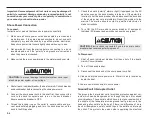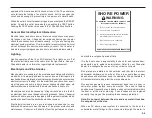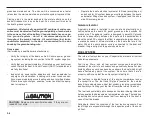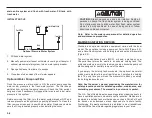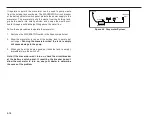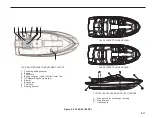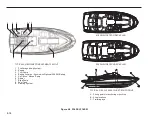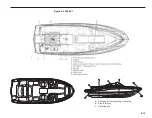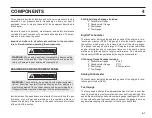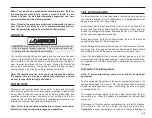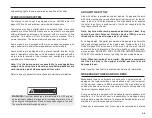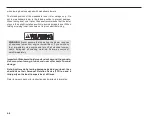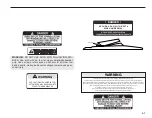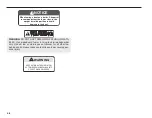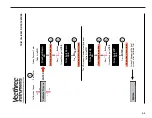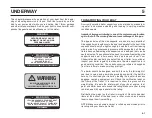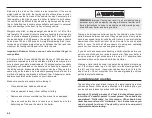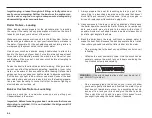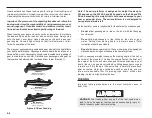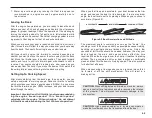
Note: Your boat has a mechanical steering system. Refer to
the steering manufacturer’s owner’s manual found in your
Owner’s Packet, for detailed information regarding use, care
and maintenance of the steering system.
Note: Refer to the engine manufacturer’s information found in
your Owner’s Packet for use, care and maintenance instruc-
tions for power steering units installed on their motors.
THROTTLE
The throttle controls the boat’s speed and the direction the boat
travels. If the throttle is in its center neutral position, the boat will not
move forward or aft with the engine running. Moving the throttle for-
ward from center moves the boat forward. Moving the throttle aft
moves the boat backward. The speed at which the boat moves is
directly related to how far the operator pushes the throttle.
Note: The throttle must be in its center neutral position before
the engine will start. See your engine manufacturer’s owner’s
manual for specific starting instructions.
POWER TRIM
The power trim system allows the operator to raise and lower the
stern drive to adjust the drive angle while underway. It also allows
the operator to raise and lower the drive for trailering, beaching, and
operation in shallow water. Control your trim setting with the trim
switch on the control handle.Section 5 includes information on the
importance of proper trim while operating the boat.
Note: Refer to your engine manufacturer’s owner’s manual for
information concerning maintenance and operation.
FIRE EXTINGUISHERS
As the boat owner, you are responsible for making sure you have
the required number of fire Extinguishers. Fire Extinguishers must
be approved by the U.S. Coast Guard.
Boats longer than 26 feet and shorter than 40 feet: Two Type B-1 or
at least one Type B-2 portable hand Extinguishers. If your boat has
a fixed fire extinguishing system approved by the U.S. Coast Guard,
one Type B-1 extinguisher is required.
Boats longer than 16 feet and shorter than 26 feet: At least one
portable hand Type B-1 fire extinguisher.
All fire Extinguishers should be mounted in a readily accessible loca-
tion away from the engine compartment. Everyone on board should
know where the fire Extinguishers are and how to operate them.
If your fire extinguisher has a charge indicator gauge, cold or hot
weather may affect the gauge reading. Consult the instruction man-
ual supplied with the fire extinguisher to determine the accuracy of
the gauge.
Automatic Fire Extinguisher
Note: A fire extinguishing system is available as optional
equipment.
The fire extinguishing system in the engine compartment uses a fire
extinguishing agent. In case of fire, the heat-sensitive automatic
nozzle releases agent as a vapor, totally filling the area with agent
to extinguish the fire.
The system’s indicator light at the helm is illuminated when the igni-
tion switch is on. When the system is discharged, the indicator light
will go out.
Allow agent to fill entire engine compartment for at least 15 minutes.
Hot metals or fuel can also begin cooling during this time.
Cautiously
inspect compartment for cause of fire and damage to
4-3
CAUTION:
Acceleration at full throttle is not recommended until
after the engine “break-in period.” This break-in period also
coincides with the engine 20-hour checkup.
Summary of Contents for 2012 SSi
Page 15: ...1 7...
Page 16: ......
Page 20: ......
Page 49: ...3 14...
Page 74: ...5 16...
Page 75: ...5 17...
Page 93: ......
Page 101: ......
Page 108: ...WIRING SCHEMATICS 12 12 1 196 206 216 SSI...
Page 109: ...12 2 196 206 216 SSI...
Page 110: ...12 3 226 SSI...
Page 111: ...12 4 226 SSI...
Page 112: ...12 5 246 SSI...
Page 113: ...246 SSI 12 6...


